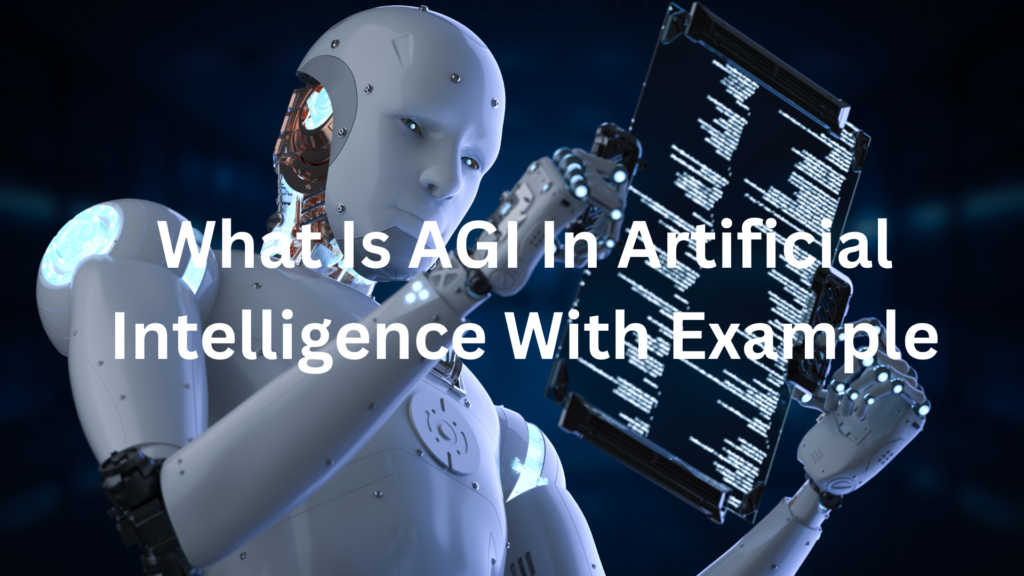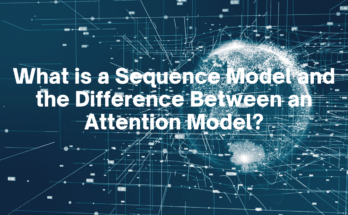Have you ever heard of Artificial General Intelligence (AGI)? It’s a fascinating field in AI research that is about developing software that is as smart as humans. We’re talking about programs that can learn independently, just like ours! But hold your horses, because achieving AGI might still be a long way off. Some experts think it could take decades, maybe even centuries! Essentially, AGI is like our attempt to build an AI that thinks and learns just like a human brain does. It’s pretty mind-blowing stuff. Exploring “What is AGI in Artificial Intelligence?” prompts investigation into the theoretical and practical challenges of achieving general-purpose AI. Discussions about AGI vs AI frequently touch on the philosophical ramifications of building computers with cognitive capacities similar to those of humans. What’s AGI, and how does it differ from narrow AI? Discover the answer in our full essay.
AGI Vs AI

Over the years, AI researchers have achieved remarkable milestones, pushing the boundaries of machine intelligence closer to human capabilities. These advancements have brought us closer to emulating human cognitive processes. AGI remains largely a theoretical concept despite ongoing efforts to advance its development.
Narrow AI, employed presently, is trained on data to handle specific tasks or situations within a defined context. It excels within its designated parameters, leveraging data to achieve task-specific objectives. But AGI? Well, that’s the holy grail of AI—a system that can reason, learn, and adapt just like us. It’s the realm of science fiction, where machines could potentially perform tasks similar to humans and exhibit intelligence across various domains autonomously. This concept embodies a futuristic vision of technology, where machines operate independently, resembling human capabilities. Such a concept envisions machines operating independently of human guidance, embodying a vision of futuristic technology. This vision inspires ongoing research aimed at realizing the possibilities of such autonomous and versatile artificial intelligence.
So, It’s a fascinating concept, isn’t it? The idea of machines not just doing what they’re told, but thinking and learning for themselves. Who knows what the future holds for AI? One thing’s for sure: it’s an exciting time to be exploring the possibilities!
AGI Technology

Let’s dive into the fascinating world of AI! Deep learning, a key discipline within AI, is all about teaching neural networks with multiple layers to unravel the complexities hidden within raw data. Think of it as peeling back layers of an onion to reveal intricate relationships that were previously hidden from view.
Now, let’s talk about generative artificial intelligence, or generative AI for short. It’s akin to the creative facet of deep learning, where AI systems possess the remarkable ability to generate unique and realistic content derived from their acquired knowledge. This capacity showcases the imaginative potential within AI, opening doors to new forms of expression and innovation. It’s almost like magic—machines creating art, music, and even stories all on their own!
Moving on to natural language processing, or NLP—it’s the branch of AI that gives computers the power to understand and speak human language. Using fancy technologies like computational linguistics and machine learning, NLP systems can break down language into tiny building blocks called tokens and grasp the nuances of how they fit together in context.
And last but not least, let’s talk about computer vision. Imagine giving machines the gift of sight! With computer vision, AI systems can analyze visual data, understand spatial information, and even recognize objects and patterns in real-time. Consider self-driving cars: they depend on computer vision to perceive the surrounding environment and safely navigate through traffic. This reliance on computer vision underscores the critical role of visual perception in autonomous vehicle technology. So there you have it—a glimpse into the incredible ways AI shapes the world around us. It’s like we’re living in a sci-fi movie, but it’s all happening right here, right now
What Is AGI In Artificial Intelligence With Example
The question “What is AGI in Artificial Intelligence?” sparks debate among experts in the field.

Let’s take a closer look at the cutting-edge research driving the field of artificial intelligence! Researchers are constantly pushing the boundaries of what’s possible, with a keen focus on developing systems that could lead us to the holy grail of AI—Artificial General Intelligence (AGI). One prime example of this research is IBM’s Watson—a true powerhouse in the world of AI. Watson and similar supercomputers are capable of crunching numbers and handling calculations that would leave your average computer scratching its circuits in confusion.
Then there are expert systems—these AI marvels mimic human judgment with uncanny accuracy. Picture this: they can sift through patient data and recommend personalized medicine, or even predict the molecular structure of compounds. It’s like having a team of expert doctors and scientists right at your fingertips!
Ever heard of AlphaGo? It’s another shining example of narrow intelligence at its finest. This computer program has mastered the ancient board game Go, showcasing its prowess in a specific area of problem-solving.
And let’s not forget about the Language Model Generative Pre-trained Transformer—quite the mouthful, huh? You might know it better as GPT-3 and its successor GPT-4, released by OpenAI. These remarkable programs are like virtual wordsmiths, effortlessly generating human-like language with astonishing accuracy. It’s like having your own personal Shakespeare at the touch of a button! With each breakthrough, we edge closer to unlocking the true potential of artificial intelligence. It’s an exciting time to be part of this ever-evolving field!
Artificial Superintelligence

Imagine a future where Artificial Superintelligence (ASI) surpasses even the sharpest human minds, unlocking solutions to problems that currently baffle us. Picture this: ASI systems designing energy systems that operate with mind-blowing efficiency or crafting groundbreaking medical treatments that revolutionize healthcare as we know it. But hold onto your hats—this future is still largely the stuff of science fiction. ASI remains largely theoretical, shrouded in debate and speculation. While the idea of AI surpassing human intelligence sparks both excitement and concern, we’re still grappling with the many questions and challenges it brings. Yet, as we continue to push the boundaries of what’s possible in the realm of AI, the prospect of ASI remains a tantalizing glimpse into what the future may hold. It’s a topic that fuels endless fascination and drives us to explore the uncharted territories of artificial intelligence.
What is the future of AGI?

Even though achieving Artificial General Intelligence (AGI) might still seem like a distant dream, the rapid strides made in the AI field are bringing us closer to that elusive goal. But here’s the thing—many experts conducting AI research aren’t quite sold on the idea that AGI will ever become a reality. Some even raise doubts about whether it’s something we should be aiming for in the first place. The question of when, or if, we’ll ever achieve AGI is hotly debated among scholars and scientists alike. Take Ray Kurzweil, for example—Google’s director of engineering and a true trailblazer in pattern recognition technology.
He’s one of the optimists, believing that AI will hit “human levels of intelligence” by 2029, with full-blown superhuman intelligence arriving by 2045. And while 2022 did see some breakthroughs in generative AI, bringing us closer to Kurzweil’s vision, we’re not quite there yet. These AI marvels, while impressive, still have their fair share of flaws and risks, making them far from fully autonomous AGI. But here’s the kicker—despite the uncertainties and debates, the quest for AGI continues unabated. It’s a journey marked by twists and turns, with scholars debating whether AGI might forever remain out of reach. Despite advancements, skepticism persists regarding the attainability of artificial general intelligence. Yet, as we march forward into the unknown, one thing’s for sure—the future of AGI is anything but certain, and the pursuit of unlocking its mysteries is far from over.
Risks of Artificial General Intelligence

The idea of creating an AI that not only matches but surpasses human abilities might stir up some worries. Think of job losses due to automation and other potential risks. But here’s the thing—developing and implementing Artificial General Intelligence (AGI) could bring about a host of benefits for society.
Imagine this: AGI has the power to tackle complex problems that currently leave us scratching our heads, like curing diseases or combating climate change. It’s like having a superhero on our side, revolutionizing entire fields and making the impossible suddenly seem within reach.
As Liwanag rightly puts it, AI is just a tool—it’s all about how we use it. Sure, there are risks, but with the right intentions, the possibilities are endless. Take transportation, AGI-controlled systems could make our roads safer with self-driving vehicles, reducing accidents and making life better for everyone.
And let’s not forget about convenience. AGI-powered virtual assistants and chatbots are like having a helpful friend available 24/7, ready to lend a hand whenever you need it. It’s the kind of technology that makes life a little easier and a lot more efficient.



